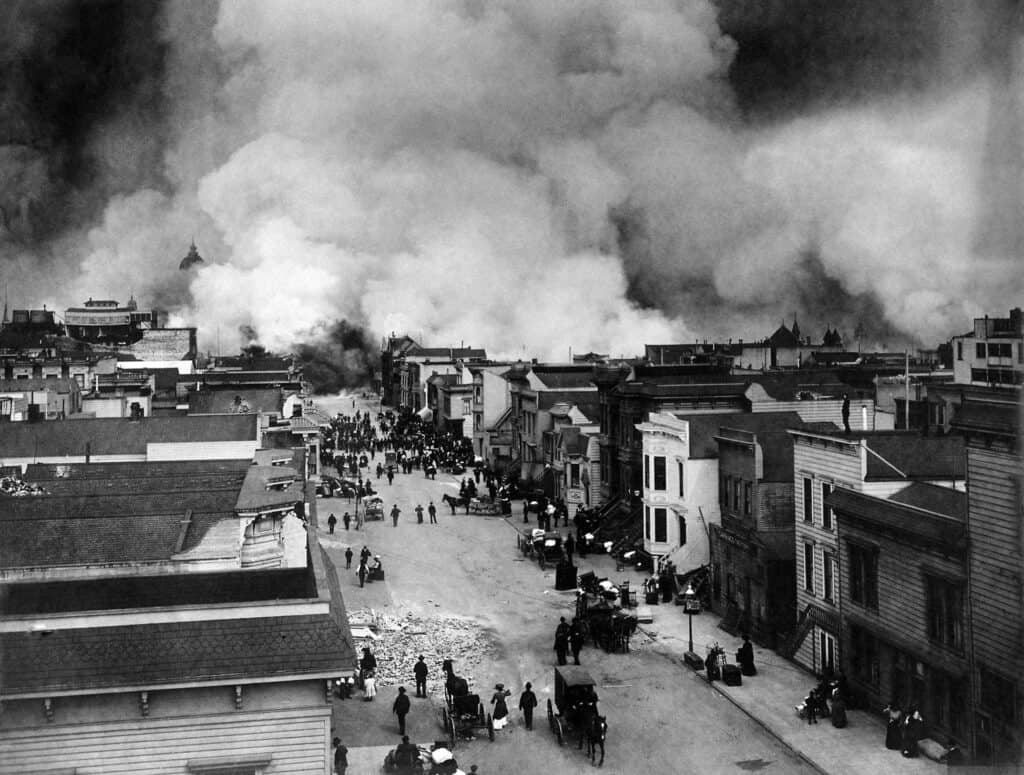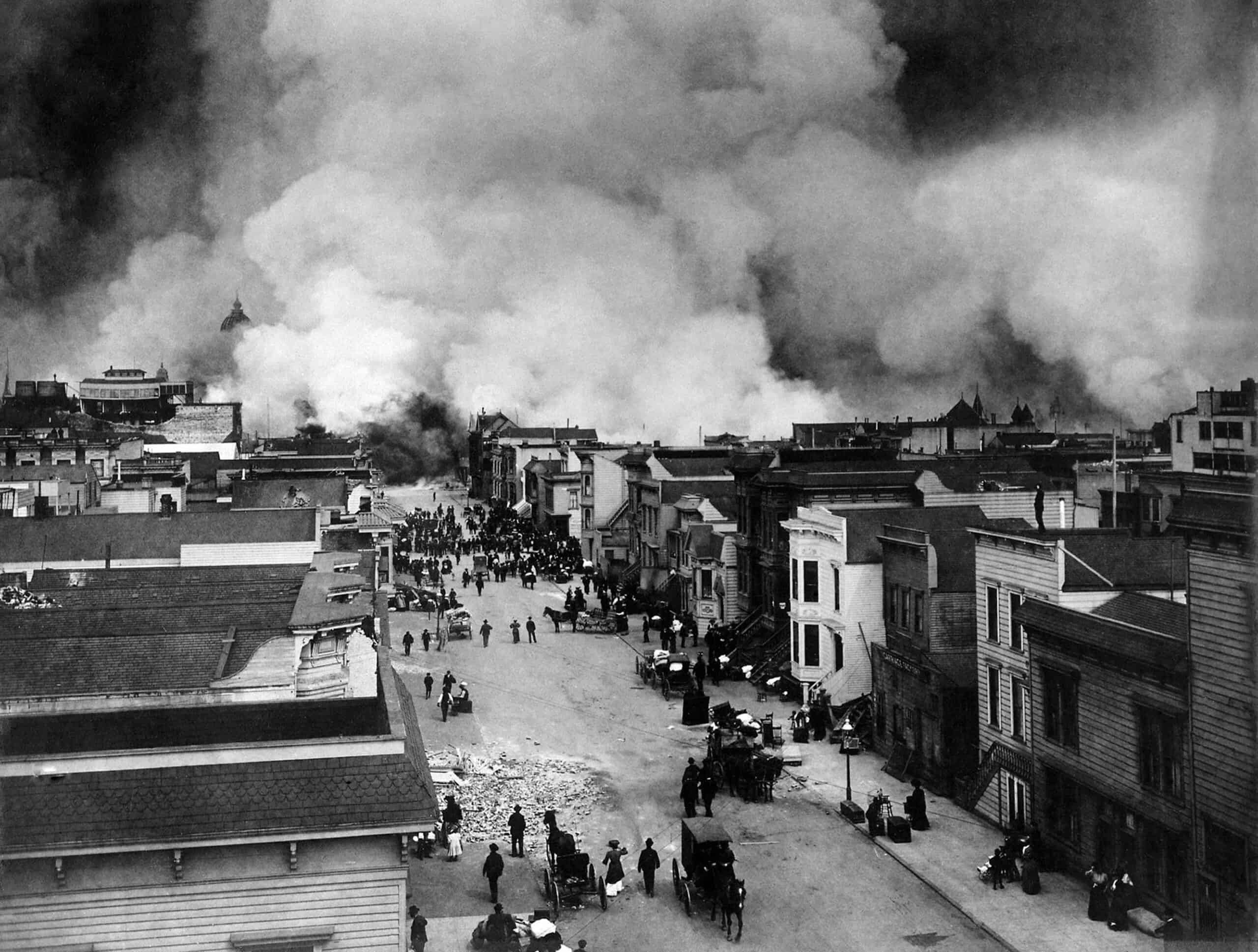California experiences more than 100 earthquakes per day. On average, an earthquake occurs at least once in three minutes. This is because of California’s unique location in relation to the San Andreas Fault, which is one of the major fault zones in the world. However, despite earthquakes occurring so often in the state, most of these quakes cause virtually no damage. Of course, there are few exceptions, and notable shakes show up once in a while. Some of the biggest earthquakes in California are still talked about today. Read on to discover some of the biggest earthquakes in California!
Fort Tejon: January 9, 1857
Magnitude: 7.9
Aftermath: 2 killed, 220-mile surface scar
The Fort Tejon earthquake ruptured in an area located about 75 miles northwest of Bakersfield. Fortunately, this massive earthquake occurred in an area that wasn’t so populated at the time. Still, at least two people were killed in this quake, and it left a significant mark on the earth’s surface. In addition to the 220-mile scar, the quake reversed the Kern River’s current, turning it upstream. It also had a dramatic effect on other major water bodies in the area, including the Tulare Lake, Mokelumne River, and the Los Angeles River.
San Francisco: April 18, 1906
Magnitude: 7.9
Aftermath: 3,000 killed, $524 million in property damage
The magnitude 7.9 earthquake that hit San Francisco in 1906 was one of the biggest and most destructive earthquakes to have ever occurred in California. The earthquake was caused by a major rupture in the San Andreas fault which caused major tremors.
The earthquake caused at least $400 million worth of property damage, with some estimates quoting higher figures. Up to 3,000 people died, and about 225,000 were injured. The effects of the damage occurred in several locations beyond San Francisco, including places like Santa Cruz, San Benito, and Monterey counties. The damages that took place include collapse, damaged bridges, and fire outbreaks.

Following the earthquake in April of 1906, fires erupted in San Francisco caused by ruptured gas mains. Roughly 25,000 buildings were destroyed and 3,000 people were killed due to the earthquake.
©Everett Collection/Shutterstock.com
Owens Valley: March 26, 1872
Magnitude: 7.8
Aftermath: 27 killed, 3 aftershocks of 6.25+
The 7.8 Magnitude Owens Valley earthquake killed as many as 27 people in the small community of Lone Pine and damaged several structures (especially stone buildings) in the area. The tremors occurred as a result of the Owens Valley fault.
By the end of the earthquake, only about 10 out of 62 stone buildings on Lone Pine’s Main Street still stood. Conservative estimates say the main quake had a magnitude of 7.4. However, seismologists suggest that this wave was closer to 7..8, or 7.9. Not only was the main wave massive, but seismologists also recorded at least three aftershocks that were in the magnitude of 6.25 or more, causing additional damage to the already devastated town.
Kern County: July 21, 1952
Magnitude: 7.5
Aftermath: 12 killed, $50 million in property damage
Prior to the Kern County earthquake in 1952, the White Wolf fault on which the quake occurred was not considered a major threat. However, when the quake occurred, it broke the record for the biggest earthquake in the Southern California area in over 80 years.
The tremor of the 7.5 magnitude earthquake got to surrounding cities, causing significant damage in Nevada, San Diego, and San Francisco. The quake caused 12 deaths, and as many as 18 people were injured. The quake and its massive aftershocks destroyed at least 100 buildings, a railroad section, and agricultural lands in the affected area.
Lompoc: November 4, 1927
Magnitude: 7.3
Aftermath: No major injuries, slight damage
The 7.3 magnitude earthquake occurred about 10 miles offshore of Lompoc but did not cause significant damage on land. It did produce a sea quake that stranded several fish and shook at least 2 ships.
On land, there were only slight damages to buildings, including collapsed buildings, cracked Chimneys, cracked walls, and shifting foundations. Only the coastal town close to the epicenter of the quake experienced major damage. The quake triggered a tsunami in coastal areas in San Francisco, San Diego, Fort Point, and La Jolla.
Landers: June 28, 1992
Magnitude: 7.3
Aftermath: 1 killed, 400 injured, 6.5 aftershock
When it occurred in 1992, the Landers earthquake was the largest in California in 40 years. The quake involved five different faults and was felt in surrounding locations, including Los Angeles, Nevada, Idaho, and Arizona. Fortunately, the epicenter of the quake was in a sparsely populated area.
One of the biggest aftershocks of the Landers earthquake occurred in Big Bear. It had a magnitude of 6.5 and caused considerable damage of its own, including leaving a 44-mile-long scare. One person died directly from this quake, and another 2 died of heart attacks due to the quake. The earthquake injured 400 people.
Cape Mendocino: April 25, 1992
Magnitude: 7.2
Aftermath: Hundreds of Injuries, fire outbreak, 6.5 and 6.6 aftershocks
The Cape Mendocino earthquake was a high-magnitude quake that occurred in an area close to Petrolia in 1992. The main wave had a magnitude of 7.2. In the next wave, the aftershocks were measured to be about 6.6 and 6.5, which were also quite massive.
While the quake did not cause major damage to buildings, it triggered a tsunami and massive landslides that injured hundreds of people. The quake also caused major fire outbreaks. However, the tremors shut the garage doors of the Petrolia firehouse, making it difficult for the fire crew to get to the scene and put out the fires that broke out in the wake of the quakes.
Ludlow (Hector Mine Quake): October 16, 1999
Magnitude: 7.1
Aftermath: Minimal damage
Although the Hector Mine Damage had one of the highest magnitudes on record, it did not cause major damage because it occurred in a remote area in the Mojave desert. However, the quake sent a small cluster of foreshocks before the mainshock that affected surrounding areas. The most significant damage was the derailing of a passenger train. Fortunately, no one died on the train, and there were only minor injuries. It also caused power outages and destroyed two bridges.
Imperial Valley: May 18, 1940
Magnitude: 7.1
Aftermath: 9 killed, and $6 million in damage
The 1940 Imperial Valley earthquake is the strongest earthquake on record in the Imperial Valley area. The quake led to a surface scar that ran for at least 25 miles. Buildings closest to the quake’s epicenter suffered major damage. But the impact was felt as far away as Los Angeles and Arizona.
The Imperial Valley quake caused significant damage in the affected area. Property damage was to the tune of $6 million. Also, 8 people lost their lives, and at least 20 were injured. The quake also damaged a railroad and a lot of agricultural lands.
Conclusion
The list above shows some of the most noteworthy earthquakes that have been recorded in the state’s history. It is important to note that no major earthquake with significant loss of life and property has occurred in California in recent years.
Up Next
Thank you for reading! Have some feedback for us? Contact the AZ Animals editorial team.








